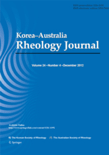
KOREA-AUSTRALIA RHEOLOGY JOURNAL
Scope & Guideline
Advancing rheological science across borders.
Introduction
Aims and Scopes
- Fundamental Rheological Studies:
The journal publishes research that explores the basic principles of rheology, including the study of non-Newtonian fluids, viscoelasticity, and flow behavior under various conditions. - Applications in Material Science:
There is a strong emphasis on the application of rheological principles in material science, particularly in the development and characterization of polymers, composites, and nanomaterials. - Interdisciplinary Research:
The journal encourages interdisciplinary approaches, showcasing how rheology intersects with fields such as biomedical engineering, food science, and environmental science. - Computational and Experimental Techniques:
A significant portion of the research focuses on both computational modeling and experimental methods to characterize the rheological properties of materials. - Innovative Technologies:
The journal highlights innovative technologies and methodologies, such as machine learning applications in rheology, which contribute to the advancement of the field.
Trending and Emerging
- Nanomaterials and Composites:
There is a growing interest in the rheological properties of nanomaterials and composite materials, particularly their behavior in various applications, such as energy storage and biomedical devices. - Machine Learning and AI Applications:
The integration of machine learning and artificial intelligence in analyzing and predicting rheological behaviors is emerging as a significant trend, offering new methodologies for material characterization. - Biological and Biomedical Rheology:
Research focusing on the rheological properties of biological fluids and their implications in medical applications is gaining traction, reflecting the journal's emphasis on interdisciplinary studies. - Sustainable and Green Materials:
The exploration of rheological properties in the context of sustainable materials and processes, such as biodegradable polymers and eco-friendly composites, is becoming increasingly relevant. - Advanced Processing Techniques:
There is a trend towards studying advanced processing techniques, such as 3D printing and microfluidics, and their relationship with the rheological properties of materials, indicating a shift towards practical applications.
Declining or Waning
- Traditional Fluid Dynamics:
Research solely focused on classical fluid dynamics without incorporating rheological aspects is becoming less frequent, as the journal shifts towards more complex and nuanced studies involving non-Newtonian fluids. - Simplistic Material Characterization Methods:
Studies that rely on basic characterization techniques without integrating advanced methodologies, such as molecular simulations or comprehensive rheological models, are appearing less often. - Niche Applications of Rheology:
Specific applications of rheology that do not align with broader interdisciplinary trends, such as niche industrial applications without significant theoretical advancements, are declining in frequency. - Limited Scope on Static Rheology:
Research that exclusively focuses on static or equilibrium rheological properties, without exploring dynamic behaviors or time-dependent phenomena, is becoming less common. - Historical Reviews and Summaries:
The publication of historical reviews or summaries of rheological concepts without new insights or advancements is decreasing as the journal prioritizes original research contributions.
Similar Journals
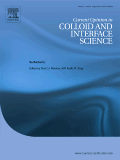
CURRENT OPINION IN COLLOID & INTERFACE SCIENCE
Unveiling Cutting-edge Insights in Interface ScienceCURRENT OPINION IN COLLOID & INTERFACE SCIENCE, published by Elsevier Science London, serves as a premier platform for researchers and professionals in the field of colloid, interface science, and related disciplines. With an impressive Q1 ranking in multiple categories including Colloid and Surface Chemistry, Physical and Theoretical Chemistry, Polymers and Plastics, as well as Surfaces and Interfaces, this journal showcases cutting-edge developments and expert opinions that drive innovation in these areas. As a leader in its field, it maintains robust academic standards, reflected in its high percentile rankings across various Scopus categories, such as 3rd in Surfaces and Interfaces and 10th in Physical and Theoretical Chemistry. While the journal is not Open Access, it provides valuable insights to a wide audience, making it an essential resource for advancing knowledge and fostering collaborations among researchers, academics, and industry professionals alike. With a continual publication timeline extending from 1996 to 2024, it captures the evolving landscape of colloid and interface science, ensuring that readers are equipped with the latest findings and perspectives.
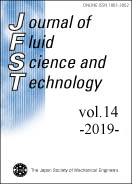
Journal of Fluid Science and Technology
Your Gateway to Cutting-Edge Fluid ResearchThe Journal of Fluid Science and Technology, published by the Japan Society of Mechanical Engineers, serves as a pivotal platform for the dissemination of cutting-edge research in the fields of fluid mechanics and mechanical engineering. With an ISSN of 1880-5558, this Open Access journal has been dedicated to advancing the understanding of fluid flow and transfer processes since its establishment. As of 2023, it holds a significant position with a Q3 quartile ranking in both Fluid Flow and Transfer Processes and Mechanical Engineering categories. Researchers and practitioners are encouraged to explore the journal’s extensive collection of articles, contributing to the body of knowledge that impacts various practical applications in engineering and technology. The journal, which has established a reputation for quality amidst a competitive landscape, further fosters international collaboration and education by providing unrestricted access to its content. For professionals and students alike, the Journal of Fluid Science and Technology represents an invaluable resource for the latest findings and innovations in fluid dynamics and mechanical systems.
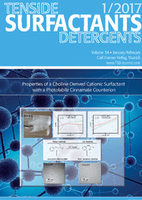
TENSIDE SURFACTANTS DETERGENTS
Leading the Way in Surfactant ResearchTENSIDE SURFACTANTS DETERGENTS, published by WALTER DE GRUYTER GMBH, is a pivotal journal in the fields of Chemical Engineering, Chemistry, and Condensed Matter Physics, providing a unique platform for the dissemination of high-quality research since its inception in 1986. With an ISSN of 0932-3414 and an E-ISSN of 2195-8564, this journal has established a significant presence in the academic community, particularly in Germany. Although it currently does not offer Open Access, it remains a valuable resource for researchers seeking to enhance their understanding of surfactants and detergents and their applications in various industries. In the latest Scopus rankings, the journal holds positions in the 35th percentile for General Chemistry and Chemical Engineering, indicating its role in the global research landscape. TENSIDE SURFACTANTS DETERGENTS continues to foster innovation through rigorous peer-reviewed articles and research findings, making it an essential reading for professionals and students aiming to deepen their knowledge and impact in these dynamic fields.

JOURNAL OF SURFACTANTS AND DETERGENTS
Illuminating the Future of Surfactant TechnologyJournal of Surfactants and Detergents, published by Wiley, is a prominent peer-reviewed journal dedicated to advancing scientific knowledge in the field of surfactants, detergents, and their applications. With an ISSN of 1097-3958 and an E-ISSN of 1558-9293, this journal serves as an essential resource for researchers, industry professionals, and students specializing in Chemical Engineering, Physical and Theoretical Chemistry, and Materials Science. Since its inception in 1998, the journal has fostered innovative research and multidisciplinary collaboration, reflected in its current Q3 ranking in several Scopus categories. Although it operates under a traditional publishing model, the journal's robust research contributions continue to engage a wide audience eager to explore the latest developments in surfactant and detergent science. As a key player in the field, the journal not only publishes cutting-edge research but also facilitates dialogue and knowledge exchange, making it an invaluable asset for anyone invested in the chemistry of surfaces and interfaces.

RHEOLOGICA ACTA
Unraveling the Complexities of Material BehaviorRHEOLOGICA ACTA, established in 1958 and published by Springer, is a premier journal dedicated to advancing the understanding of rheological behavior in materials. With an impressive impact factor reflected in its Q2 rankings across multiple disciplines, including Condensed Matter Physics, Materials Science, and Mechanics of Materials, this journal serves as an essential resource for researchers, professionals, and students alike. As a key publication in its field, RHEOLOGICA ACTA disseminates high-quality research articles, reviews, and case studies that contribute to the understanding of complex fluid behavior and material properties. Though it operates under a subscription model, the depth and breadth of the content it provides ensures that it remains a vital part of the academic dialogue surrounding materials science and engineering. For those seeking to deepen their expertise, RHEOLOGICA ACTA is indispensable, fostering innovation and progress in the ever-evolving landscape of material characterization and application.

JOURNAL OF POLYMER SCIENCE
Elevating Polymer Science: Bridging Research and Real-World ApplicationsJOURNAL OF POLYMER SCIENCE, published by WILEY, is a premier, open-access journal dedicated to advancing the field of polymer science and its applications. With an ISSN of 2642-4150, it offers a platform for high-quality research and innovative ideas, contributing significantly to the understanding of polymaterials and their functionalities. The journal is recognized for its exceptional impact within various categories, consistently achieving Q1 rankings in Materials Chemistry, Physical and Theoretical Chemistry, and Polymers and Plastics, demonstrating its influential presence in the academic community. As of 2023, it holds a distinguished position in Scopus rankings, underscoring its relevance and rigorous peer-review process. By facilitating open access to vital research findings, the JOURNAL OF POLYMER SCIENCE plays a crucial role in fostering collaboration and knowledge transfer among researchers, professionals, and students, paving the way for innovative developments in polymer applications and materials science.
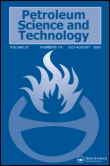
PETROLEUM SCIENCE AND TECHNOLOGY
Bridging academia and industry in energy innovation.PETROLEUM SCIENCE AND TECHNOLOGY, published by Taylor & Francis Inc, is a pivotal journal dedicated to advancing the multidisciplinary field of petroleum engineering and related technologies. With an ISSN of 1091-6466 and an E-ISSN of 1532-2459, this journal serves as a vital platform for disseminating research in areas ranging from geotechnical engineering to energy technology. As of 2023, it is recognized in the Q3 quartile across several categories, including Chemical Engineering and Fuel Technology, signifying its respectable standing within the academic community. With a convergence timeline from 1997 to 2024, the journal continuously addresses crucial issues in the energy sector, making it essential reading for researchers, industry professionals, and policy-makers alike. Although not an open access journal, its rigorous peer-reviewed articles contribute significantly to the advancement of knowledge and innovation within these fields, reflecting the journal's commitment to promoting scientific understanding and practical applications.
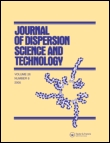
JOURNAL OF DISPERSION SCIENCE AND TECHNOLOGY
Innovating insights in polymers, coatings, and beyond.The Journal of Dispersion Science and Technology, published by Taylor & Francis Inc, stands as a vital resource in the fields of Physical and Theoretical Chemistry, Polymers and Plastics, and Surfaces, Coatings and Films. With an impressive history spanning over four decades, from 1980 to 2024, this journal plays a crucial role in advancing the understanding of dispersion science, emphasizing the intricacies of material interactions and their technological applications. Currently positioned in the Q2 and Q3 quartiles across relevant categories as of 2023, the journal demonstrates a robust impact within academic circles, reflected in its rankings: 49th in Materials Science - Surfaces, Coatings and Films and 63rd in Materials Science - Polymers and Plastics. Researchers, professionals, and students alike will find a wealth of innovative studies, comprehensive reviews, and experimental insights that contribute significantly to advancements in material science and technology. The journal's commitment to quality and rigor makes it an essential read for those seeking to stay at the forefront of these dynamic fields.

COLLOID JOURNAL
Connecting researchers to the latest in surface phenomena.COLLOID JOURNAL, published by PLEIADES PUBLISHING INC in the United States, is a pivotal platform for disseminating cutting-edge research in the fields of Colloid and Surface Chemistry, Physical and Theoretical Chemistry, and Surfaces and Interfaces. With an ISSN of 1061-933X and E-ISSN 1608-3067, this journal offers a valuable resource for researchers and professionals seeking to explore advancements in colloidal systems and surface phenomena. Although currently categorized in the lower quartiles (Q4) within its respective fields, the journal serves as an essential space for emerging ideas and methodologies, contributing to the broader understanding of material interactions at the micro and nano scales. The H-index and specific impact factor data are yet to be determined, but the journal maintains a dedication to high-quality peer-reviewed content that continues to shape the landscape of colloid science. Researchers and students alike will find the COLLOID JOURNAL an indispensable reference for keeping abreast of the latest developments, despite the absence of open access options, reflecting the journal's traditional publishing model. With converged years from 1989 to 2024, it represents a long-standing commitment to scholarly dissemination and exploration in its fields of study.

MATERIALS SCIENCE-POLAND
Exploring the Depths of Material InnovationMATERIALS SCIENCE-POLAND, published by SCIENDO, is an esteemed open access journal dedicated to the rapidly evolving field of materials science. Since its inception in 2002 and transitioning to an open access model in 2015, the journal has been a vital platform for researchers and professionals to disseminate their findings and contribute to the scientific community. With an ISSN of 2083-134X and an E-ISSN of 2083-134X, it spans a comprehensive range of disciplines, focusing on condensed matter physics, materials science, and mechanical engineering among others. In the 2023 rankings, it holds a position in the Q4 and Q3 quartiles across various categories, showcasing its relevance and ongoing contribution to these fields. Researchers benefit from its accessibility, enabling wider reach and engagement with contemporary topics in material innovation and applications. As the journal continues to evolve until 2024, it remains a cornerstone for scholars looking to advance their knowledge and research in materials science.